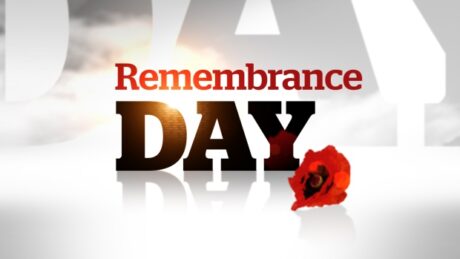1. Remembrance Day was first observed in 1919 throughout the British Commonwealth. It was originally called “Armistice Day” to commemorate armistice agreement that ended the First World War on Monday, November 11, 1918, at 11 a.m.—on the eleventh hour of the eleventh day of the eleventh month.
It is common practice to observe two minutes of silence in honor of all our fallen at 11 a.m. every November 11. 2. From 1921 to 1930, Armistice Day was held on the Monday of the week in which November 11 fell. In 1931, Alan Neill, Member of Parliament for Comox–Alberni, introduced a bill to observe Armistice Day only on November 11. Passed by the House of Commons, the bill also changed the name to “Remembrance Day”. The first Remembrance Day was observed on November 11, 1931.
3. Every year on November 11, Canadians pause in a moment of silence to honour and remember the men and women who have served, and continue to serve Canada during times of war, conflict and peace. We remember the more than 2,300,000 Canadians who have served throughout our nation’s history and the more than 118,000 who made the ultimate sacrifice.
4. The poppy is the symbol of Remembrance Day. Replica poppies are sold by the Royal Canadian Legion to provide assistance to Veterans.
5. Remembrance Day is a federal statutory holiday in Canada. It is also a statutory holiday in three territories (Yukon, Northwest Territories and Nunavut) and in six provinces (British Columbia, Alberta, Saskatchewan, New Brunswick, Prince Edward Island and Newfoundland and Labrador).
6. The national ceremony is held at the National War Memorial in Ottawa. The Governor General of Canada presides over the ceremony. It is also attended by the Prime Minister, other government officials, representatives of Veterans’ organizations, diplomatic representatives, other dignitaries, Veterans as well as the general public.
7. In advance of the ceremony, long columns of Veterans, Canadian Armed Forces members, RCMP officers, and cadets march to the memorial lead by a pipe band and a colour guard. At the end of the ceremony, they march away to officially close the ceremony.
8. Some of the 54 Commonwealth member states, such as Canada, the United Kingdom and Australia, observe the tradition of Remembrance Day on the eleventh hour of the eleventh day of the eleventh month. Other nations observe a solemn day but at different dates. For example, ANZAC Day is observed in New Zealand on April 25. In South Africa, Poppy Day is marked on the Sunday that falls closest to November 11.
9. Many nations that are not members of the Commonwealth also observe Remembrance Day on November 11, including France, Belgium and Poland.
10. The United States used to commemorate Armistice Day on November 11. However, in 1954 they changed the name to Veterans Day.
11. Great Britain, France, Australia and Canada also commemorate the veterans of World War I and World War II on or near November 11th: Canada has Remembrance Day, while Britain has Remembrance Sunday (the second Sunday of November).
11 Quick Facts about Remembrance Day
November 8, 2021 by








